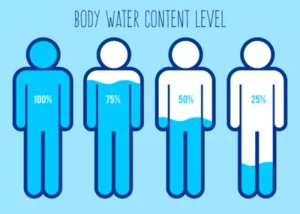
If they use alcohol before bedtime, and especially if they shift their sleep timing on weekends compared to weekdays, they may have chronic circadian misalignment. If they report daytime sleepiness, one possible cause is alcohol-induced changes in sleep physiology. PTSD is characterized primarily https://ecosoberhouse.com/ by alterations in arousal and recurrent intrusive thoughts that follow a traumatic event. Among those with AUD, about 15-30% overall have co-occurring post-traumatic stress disorder, with increased rates of 50-60% among military personnel and veterans.28 The two conditions may worsen each other.
- Research in animals shows that having more self-determination and control over one’s environment can help facilitate adaptive brain changes after ending substance use.
- With continued alcohol use, steatotic liver disease can lead to liver fibrosis.
- If you try AA and it doesn’t feel like the right fit for you, there are other support groups you can try.
- Drinking releases endorphins which can lead people to feel happy, energized, and excited.
- In general, DTI findings in alcoholism indicate a greater role for demyelination than axonal degeneration in the compromise of white matter integrity.
- Chronic alcohol intake impairs the repair ability of the structures of the exocrine pancreas, thereby leading to pancreatic dysfunctioning [14].
A Basic Guide to Addiction Treatment and Recovery
If you’re worried that someone you know has an alcohol addiction, it’s best to approach them in a supportive way. This could push them away and make them more resistant to your help. Pancreatitis can be a short-term (acute) condition that clears up in a few days.
Alcohol use disorder

The arrows indicate known directional connections between brain structures of the extended reward and oversight system. Analyses of individual components of DTI metrics have provided novel in vivo information about myelin integrity (measured as radial diffusivity) and axonal integrity (measured as axial diffusivity). In general, DTI findings in alcoholism indicate a greater role for demyelination than axonal why is alcohol addictive degeneration in the compromise of white matter integrity. This distinction provides convergent validity with postmortem findings, establishing DTI metrics as in vivo markers of white matter neuropathology. An outcome of this series of pathological studies was the development the New South Wales Tissue Resource Centre (Sheedy et al. 2008) at the University of Sydney, Australia, funded in part by the NIAAA.
- This can mean cutting off financial assistance or making it difficult for them to fulfill the addiction.
- A recent review found that Alcoholics Anonymous led to higher rates of abstinence from alcohol long term compared to other treatments.
- Working to stop alcohol use to improve quality of life is the main treatment goal.
- Nonetheless, difficulties in performing tests of visuospatial ability were commonly identified with the Wechsler tests of intelligence (Victor et al. 1989).
- Physical dependence, on the other hand, is when a person’s body adapts to chronic use of alcohol and results in physical symptoms—such as vomiting and diarrhea—when the person stops drinking.
- Brain regions showing greater activation in controls than alcoholics to accomplish a given task are highlighted in yellow and brain regions showing greater activation in alcoholics than in controls are shown in turquoise.
Coping and support

Environmental, genetic, metabolic, and behavioral factors that influence restitution of neurofunction have yet to be identified but are amenable to study with neuroimaging. Your confusion is understandable as alcohol use disorder can be BOTH a habitual (psychological) and a chemical (physical) addiction. Psychological dependence occurs when a person drinks in order to function « normally » and feel good. If a person stops drinking, they may experience changes in mood such as anxiety, depression, or irritability. Physical dependence, on the other hand, is when a person’s body adapts to chronic use of alcohol and results in physical symptoms—such as vomiting and diarrhea—when the person stops drinking.


Alcohol’s physical effects on the body
- Recognition of which of these processes are spared and which are impaired in a given patient could provide an empirical basis for targeted behavioral therapy during periods of recovery.
- Another receptor now recognized as central to alcohol’s actions is the N-methyl-d-aspartic acid (NMDA) subtype of glutamate receptors.
- Common co-occurring conditions include depression, anxiety, bipolar disorder, and PTSD.
